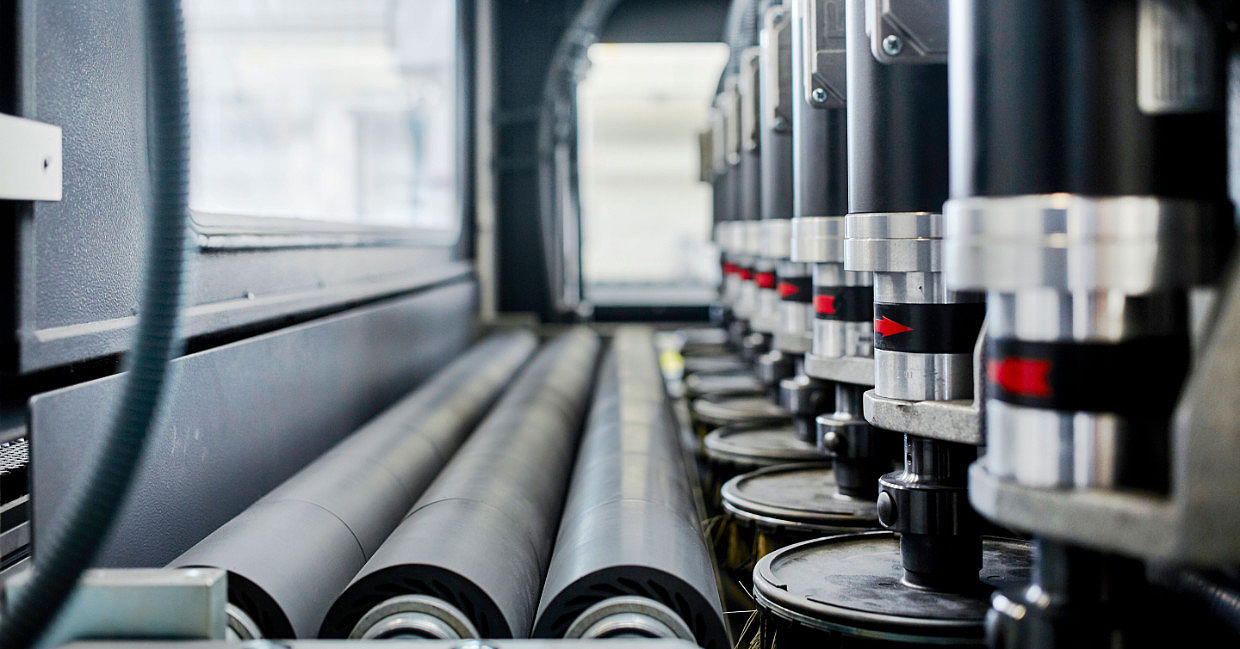
Blasting works very well to remove the oxide layer from the cut surfaces. In the case of heavy plates this works effortlessly. Pickling may be an option if you have access to the necessary equipment and chemicals.
Removal of oxide layers: Thin sheet metal pose difficulties
Both methods are disadvantageous here, because they can damage the thinner sheet metal. For this scenario, what could the sheet metal worker do, if he has to deliver the laser-cut parts without the oxide layer?
In any case, it is worth considering all possible options for action: The iron oxide that sticks to steel is relatively weak, but it is harder than the substrate material. This means: Focus on the tool and the procedure you are going to choose! Grinding off the oxide layer from the metal edges is ruled out, because the process would take too long if conventional grinding machines were used. Blasting or pickling means an additional processing step.
Deburring machines can do the job for material thicknesses of up to 20 mm, especially, if you already use one to process the edges. The machines deburr and round the sheet metal parts during the run-through process and will remove the oxide layer simultaneously. Although these are in fact different processes, with the right tools, everything can work flawlessly with just a single system.
Basically, deburring machines used for thinner sheet metal usually use three styles of tools: They can be equipped with either rotary brushes, disc brushes or grinding blocks. They round edges or remove - if equipped with the right tools - the oxide layer from the sides of the material.
The tools used to remove the oxide layer are equipped with pins or wires. The fine delicate tools chip off the oxide, so it simply flakes off.
Rotary brushes and disc brushes usually process single-sided. As required, the wire media will not process across the entire height of the cut edges, so then the material usually needs to be flipped over and processed again. There are also limits, when it comes to adhesion, because in machines that process only single-sided, the parts are held by means of vacuum.
For this application, the EDGERACER® is exceptional since it processes both sides with brushes which are outfitted with abrasives. It can remove oxide in just a single pass. The parts are held by rollers, and therefore it is possible to also apply the appropriate forces along the cut edges.
Grinding blocks have advantages, because they can be used in two-sided processes, there is no need to turn the parts, and high throughput is achieved because of that.
Either way, deburring machines have an edge over manual processing: Quality and repeatability are consistent. Additionally, the machines work faster than a person equipped with a file or angle grinder, thus the investment also pays off quickly.
But there is one thing all these procedures have in common: The tools process the surface as well. Thus, the quality of the parts surfaces is another criterion to consider when choosing the best procedure.
Brushes installed in a deburring machine are also capable of removing the oxide layer
No matter the type of machine used - the removal of oxide layers from the cutting edge is a job for brushes. Depending on the deburring machine, special oxide brushes can be used. Thus, depending on the alloy, the sheet metal worker can also tackle heavier deposits. The sheet metal parts are processed in such a way that the quality on all edges is perfect after the process.
A sheet metal worker’s goal should be the delivery of parts in precisely the quality requested by the customer. When it comes to end products for outdoor use, no manufacturer can afford the smallest flaw in the quality of the coating, because then their water resistance is compromised. In this respect, oxide layer removal just like edge rounding is a process that is essential. If at this point in the process chain you are trying to save money, you will be glad later on if you didn’t cut corners.
Whether a deburring machine is the right choice for oxide removal or whether a different method is better suited will depend entirely on the production spectrum. The operator will gain a good overview of performance and processing outcomes of a deburring machine by testing the different oxide removal methods.



